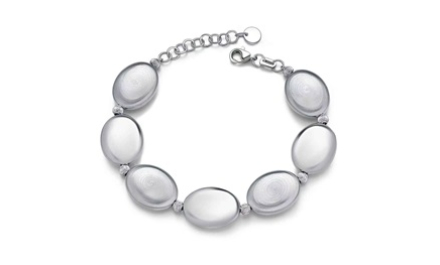Diamond manufacturers are looking to alternative markets such as India, the Middle East and Southeast Asia to sustain business amid the continued slowdown in demand from China.
According to diamond companies at the recent March Hong Kong Fairs, the Chinese market for diamonds remains soft this year, with a return to growth projected for 2025 or even 2026. This is prompting many diamantaires to set their sights on promising markets that are exhibiting a stronger appetite for diamonds.
Shreyans Dholakia, brand custodian of Shree Ramkrishna Exports Pvt Ltd (SRK), said, “China used to account for nearly 35 per cent of our business. This has since fallen to a single digit. The whole diamond industry is waiting for China’s recovery. In the meantime, demand from the US and Europe has been steady, and other markets such as Cambodia, Vietnam, the Philippines, Indonesia and India are performing well for us.”
India’s growing middle class and economic tailwinds are driving the country’s diamond sales, said Dholakia, who has seen SRK’s business from its domestic market double in the past year, albeit from a lower base. Demand is still greatest for smaller, lower-quality goods, with 50 and 70 pointers moving particularly well for local retailers. Consumers in northern India generally gravitate towards bigger diamonds in lower clarity ranges while those in southern India prefer smaller stones of better quality, he explained.
Southeast Asian markets, meanwhile, have upgraded their preferences since last year, Dholakia added. “Our clients from Cambodia and Vietnam now ask for better-quality diamonds. While they used to primarily seek 1-carat to 3-carat stones, they are increasingly buying diamonds of 3 to 5 carats,” he continued.
Stellar Group HK is likewise eyeing more business from Asia, said company managing director Rishi Mundra. The diamond manufacturer’s biggest markets are the US and Europe, followed by China. This year, it has made inroads in Thailand and Japan through trade fairs and aims to tap opportunities in Southeast Asia.
“The Southeast Asian market is expanding, and more buyers are looking for diamonds, compared to five to seven years ago. Consumers in the region appear to have more disposable income to spend,” Mundra said.
Ramkrishna Diamond used to rely on China for 50 per cent of its business, with the remainder coming from Europe and Asia. Since the slowdown in Chinese demand, it has expanded into Southeast Asia for its selection of smaller high-quality diamonds.
“We see a good future for ourselves in Vietnam, Cambodia and Indonesia. These countries’ booming tourism industries and growing segment of affluent consumers are fuelling demand for high-quality diamond jewellery,” said CEO Dijendra Kyada.
Shifting preferences
Demand remains stronger for smaller diamonds, with melee sizes to 30 pointers moving relatively well, said manufacturers.
Business is softer in the 0.50-carat to 3-carat range due to a multitude of reasons. Mundra cited competition from lab-grown diamonds, particularly in lower qualities, as one possible challenge.
Fancy shapes are likewise growing in popularity across markets. Aside from the traditionally popular cushions, pears, ovals, marquises, princess and emerald cuts, diamond manufacturers are responding to market demand for variety through fresh shapes such as kites, shields, butterflies, hearts and crosses.
SRK’s Dholakia said, “Half of our production are in fancies, and we continually explore new and diverse shapes including innovative modifications of existing cuts. The market is increasingly asking for fancy shapes; markets like Cambodia and Vietnam are venturing into these as well.”
Mundra reports exponential demand for fancy shapes, noting that several clients that previously only bought rounds have been showing interest in baguettes, emerald cuts, pear shapes and marquises. “Rounds are classics but more clients are seeking variety, going towards fancy shapes and fancy colours,” he disclosed.
China
Despite encouraging signs from other markets, much still hinges on China’s return to strength in the diamond trade.
“China is still the second largest economy in the world, and there still is demand in the market – just not at previous levels,” said Dholakia of SRK. “Even if China takes just one step forward, that would be more than enough for the entire industry to return to full prosperity.”
He however expects recovery to be gradual, noting it may take one or two more years before Chinese demand for diamonds reaches previous levels.
Mundra, for his part, said Stellar Group’s Chinese clients who used to purchase a lot of diamonds are now seeing their consumers shifting towards gold and gold jewellery. Technological innovations in gold jewellery manufacturing are also resulting in more attractive designs, lighter and thus more affordable pieces, and lower barriers to investing in gold.
“Chinese consumers may have lost some confidence in diamonds due to the steep correction in prices last year for certified diamonds. They would thus rather invest in gold than diamonds, which is admittedly a smart strategy,” Mundra explained.
Kyada of Ramkrishna Diamond said new markets could not fully offset China’s previous trading volumes. “While we try to expand into new markets, it is still difficult to match our sales to China from two years ago. We are however cautiously optimistic that the Chinese market will bounce back eventually,” he said.
One of the topics at the recent World Federation of Diamond Bourses (WFDB) annual Presidents’ Meeting for 2024 in Shanghai was the need to stimulate the lacklustre Chinese market.
WFDB leaders met with Chinese government officials and industry stakeholders to promote the importance of investing in large-scale marketing campaigns in the Chinese market, to supplement and balance such campaigns in the US.










